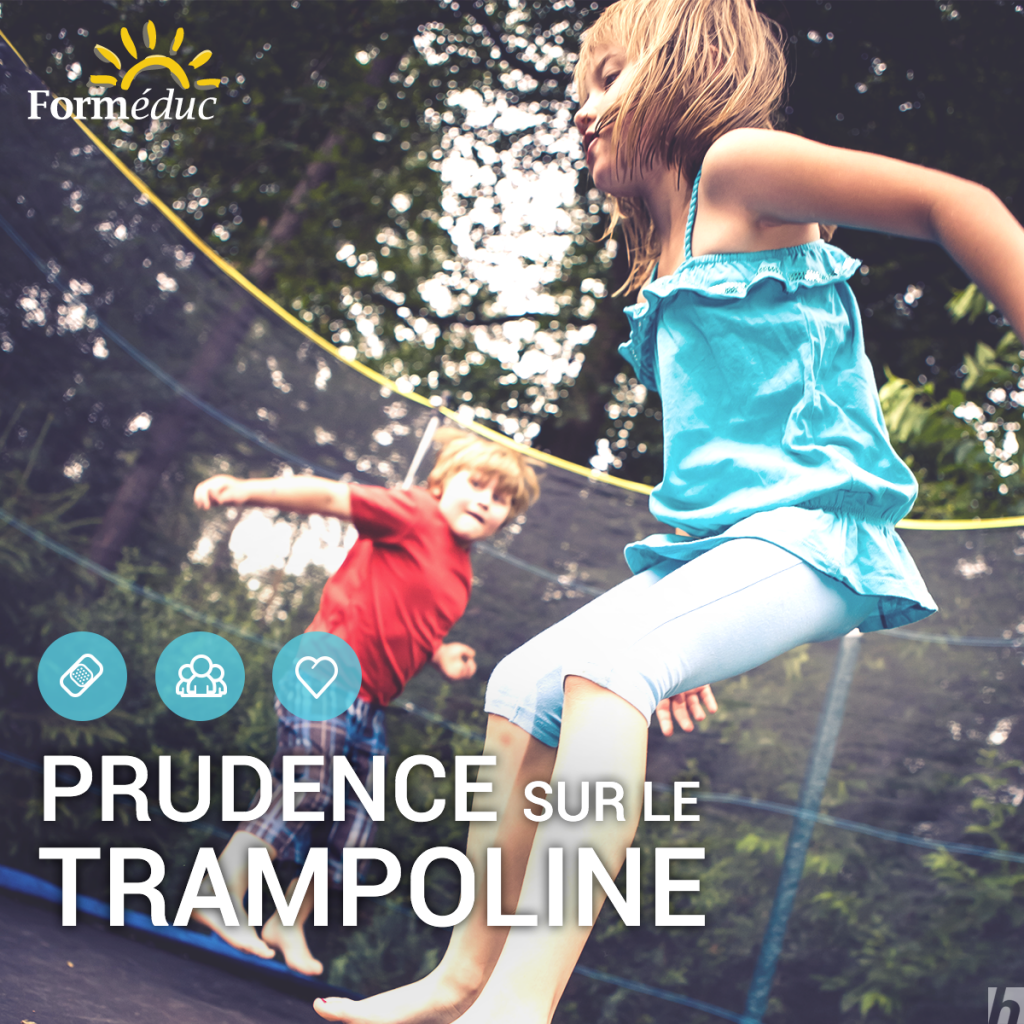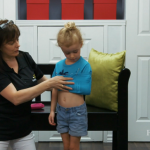

- 4 June 2020
- |
- Andrée Bouchard
Are your kids begging you to install a trampoline in the backyard? Before you do, read on.
Contrary to popular belief, trampolining is not a game, but a sport. Unfortunate events can happen in any sport. But trampolining is more dangerous than any other sport, not least because it’s difficult to protect yourself – you can’t wear a helmet, for example. Another factor increasing the risk of injury is that, when practised away from professional supervision, trampolining tends to be regarded as a game. And those who do play often follow no rules whatsoever.
The presence of a net would only accentuate a false sense of security. A regional Canadian study (Black GB, Amadeo R. Orthopedic injuries associated with backyard trampoline use in children. Can J Surg 2003;46:199 -201.) analyzed orthopedic injuries sustained by children due to recreational trampoline use in Winnipeg and Manitoba. The majority of injuries were sustained by children aged five to nine (49%). Sixty-five percent of the children were injured on the trampoline itself, and thirty-five percent of the children who were injured shared the trampoline. The net is therefore not a safety criterion, since these injuries could have occurred with or without its presence.
Although there are no Canadian regulations governing trampolines, Health Canada monitors their use and advises against their use by children under 6 years of age. In addition, according to a position paper from the Canadian Paediatric Society and the Canadian Academy of Sport Medicine, trampolines should not be used at home or on the playground, because although they are readily available and gaining in popularity, outdoor trampolines carry risks that are far too high.
Injuries associated with trampoline use range from sprains and wrist injuries to more serious injuries: such as skull fractures, spinal fractures and neck fractures.
Most injuries are caused by improper or unsupervised use.
Because there is a risk of serious injury, precautions must be taken:
- Make sure adults supervise use of the trampoline;
- Let only one child use the trampoline at a time;
- Do not allow children under 6 to use the trampoline;
- Keep ladders and chairs away from the trampoline to prevent young children from gaining unsupervised access;
- Install the trampoline on an even surface far enough away from structures, trees and other play areas. Leave a space of two meters around the trampoline and at least eight meters above it;
- Do not attempt somersaults on the trampoline, as a fall onto the neck or head could result in paralysis. Somersaults require advanced skills and should only be performed using proper equipment under the supervision of a qualified trainer;
- Never jump onto a trampoline from higher ground, and never use the trampoline as a springboard to reach higher ground;
- Use the trampoline only if shock-absorbing cushions completely cover the springs, hooks or frame. Safety cushions should be securely attached and in a contrasting color to the trampoline canvas, so that the two areas are easily distinguishable;
- Inspect the trampoline before use (springs securely attached, canvas free of holes or tears, cushions firmly attached and legs securely engaged);
- Do not place any objects under the trampoline;
- Do not use the safety net as a substitute for adult supervision.
Source: Health Canada, Trampoline Safety; ISBN: H50-3/186-2005E-PDF




